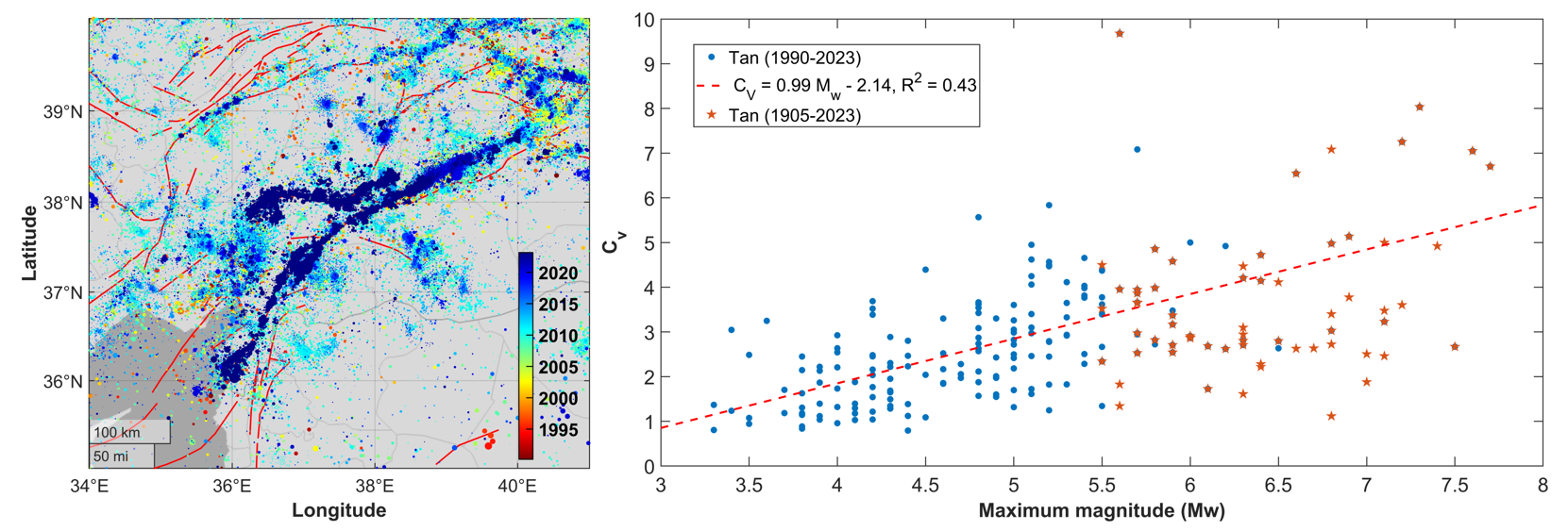The Anatolian region is one of the most seismically active tectonic settings in the world.
Here, we perform a clustering analysis of Turkish seismicity using an updated version of the Turkish
Homogenized Earthquake Catalogue (TURHEC), which contains the recent developments of the
still ongoing Kahramanmaras seismic sequence. We show that some statistical properties of seismic
activity are related to the regional seismogenic potential. Mapping the local and global coefficients
of variation of inter-event times of crustal seismicity which occurred during the last three decades,
we find that territories prone to major seismic events during the last century usually host globally
clustered and locally Poissonian seismic activity. We suggest that regions with seismicity associated
with higher values of the global coefficient of variation of inter-event times, CV, are likely to be more
prone to hosting large earthquakes in the near future than other regions characterized by lower values,
if their largest seismic events have the same magnitude. If our hypothesis is confirmed, clustering
properties should be considered as a possible additional information source for the assessment of
seismic hazard. We also find positive correlations between global clustering properties, the maximum
magnitude and the seismic rate, while the b-value of the Gutenberg–Richter law is weakly correlated
with them. Finally, we identify possible changes in such parameters before and during the 2023
Kahramanmara¸s seismic sequence.

